Navigating Ambiguity: Scope Interpretations in Spanish/English Heritage Bilinguals
Abstract
1. Introduction
| (1) | A person bought every book/Una persona compró cada libro | |
| (a) | ∃ > ∀: There is a single person that bought all existing books | |
| (b) | ∀ > ∃: For each existing book, there is a person that bought it | |
2. Quantifier Scope
| (2) | Octavio Paz wrote the book ‘The Labyrinth of Solitude’/Octavio Paz escribió el libro ‘El laberinto de la soledad’ | |
| (3) | A woman wrote every book/Una mujer escribió cada libro | |
| (a) | ∃ > ∀: There is a single woman that wrote all existing books | |
| (b) | ∀ > ∃: For each existing book, there is some woman that wrote it | |
| (4) | Egy nő írt minden könyvet |
| a woman write.PST.3SG every book.ACC | |
| ‘A woman wrote every book’ | |
| (5) | Minden könyvet egy nő írt |
| every book.ACC a woman write.PST.3SG | |
| ‘A woman wrote every book’ |
| (6) | Isomorphic Principle (Huang, 1982) |
| Suppose A and B are quantifier phrases. Then if A c-commands B at surface structure, A c-commands B at LF |
| (7) | A man decorated every cake/Un hombre decoró cada pastel | |
| (a) | Surface scope (∃ > ∀): There is a single man that decorated all existing cakes | |
| (b) | Inverse scope (∀ > ∃): For each existing cake, there is some man that decorated it | |
| (8) | Processing Scope Economy Principle (Anderson, 2004) |
| The human sentence processing mechanism prefers to compute a scope configuration with the simplest syntactic representation (or derivation). Computing a more complex configuration is possible but incurs a processing cost. |
3. Quantifier Scope Ambiguities in Bilingualism Research
4. Quantifier Scope in Spanish and English
| (9) | Lucy didn’t read every book | |
| (a) | Surface scope (¬ > ∀): Lucy read some of the books, but not all of them | |
| (b) | Inverse scope (∀ > ¬): Lucy read none of the books | |
| (10) | Every butterfly didn’t go to the city/Todas las mariposas no fueron a la ciudad | |
| (a) | Surface scope (∀ > ¬): None of the butterflies went to the city | |
| (b) | Inverse scope (¬ > ∀): Some but not all of the butterflies went to the city | |
| (11) | No todas las manzanas están en las cajas (‘Not all apples are in the boxes’) | |
| (a) | Surface scope (¬ > ∀): Some but not all of the apples are in the boxes | |
| (b) | Inverse scope (∀ > ¬): None of the apples are in the boxes | |
5. Current Study
5.1. Research Questions and Hypotheses
5.2. Participants
5.3. Methodology
5.4. Procedure
6. Results
7. Discussion
7.1. Interpretation of Results
7.2. Limitations and Future Research
8. Conclusions
Author Contributions
Funding
Institutional Review Board Statement
Informed Consent Statement
Data Availability Statement
Acknowledgments
Conflicts of Interest
Appendix A
| Type | Item | Sentence |
|---|---|---|
| Practice Items | A | A person prepared a salad Una persona preparó una ensalada |
| B | A person baked a cake Una persona horneó un pastel | |
| C | A child drew every drawing Un niño dibujó cada dibujo | |
| D | A person did not laugh Una persona no se rió | |
| Critical Items: Ambiguous sentences with quantifiers ‘a’ and ‘every’ (Type 1) | 1 | A person watered every plant Una persona regó cada planta |
| 2 | A person fed every chicken Una persona alimentó a cada gallina | |
| 3 | A person carried every plant Una persona cargó cada planta | |
| 4 | A person harvested every vegetable Una persona cosechó cada verdura | |
| 5 | A woman planted every plant Una mujer plantó cada planta | |
| 6 | A person took every pumpkin Una persona se llevó cada calabaza | |
| 7 | A woman read every book Una mujer leyó cada libro | |
| 8 | A person slept on every pillow Una persona se durmió en cada almohada | |
| 9 | A woman used every computer Una mujer usó cada computadora | |
| 10 | A woman wrapped every gift Una mujer envolvió cada regalo | |
| 11 | A man decorated every cake Un hombre decoró cada pastel | |
| 12 | A person drank every juice Una persona se tomó cada jugo | |
| 13 | A woman baked every dessert Una mujer horneó cada postre | |
| 14 | A woman made every pizza crust Una mujer hizo cada masa de pizza | |
| 15 | A person ate every snack Una persona se comió cada botana | |
| 16 | A woman cooked every stew Una mujer cocinó cada guisado | |
| Fillers: Unambiguous sentences with negation (Type 2) | 17 | A person did not do exercise Una persona no hizo ejercicio |
| 18 | A person did not play soccer Una persona no jugó fútbol | |
| 19 | A woman did not ride a bike Una mujer no montó una bicicleta | |
| 20 | A person did not eat popcorn Una persona no comió palomitas | |
| 21 | A woman did not clean the house Una mujer no limpió la casa | |
| 22 | A woman did not play guitar Una mujer no tocó la guitarra | |
| 23 | A person did not read a book Una persona no leyó un libro | |
| 24 | A man did not walk a dog Un hombre no paseó a un perro | |
| Fillers: Unambiguous sentences with quantifier ‘a’ (Type 3) | 25 | A man watered flowers Un hombre regó las flores |
| 26 | A person fed the pig Una persona alimentó al puerco | |
| 27 | A person ate cupcakes Una persona comió pastelitos | |
| 28 | A woman rode a skateboard Una mujer montó una patineta | |
| 29 | A person ironed the clothes Una persona planchó la ropa | |
| 30 | A woman used a desk Una mujer usó un escritorio | |
| 31 | A woman baked cookies Una mujer horneó galletas | |
| 32 | A person planted carrots Una persona sembró zanahorias | |
| Fillers: Ambiguous sentences with negation (Type 4) | 33 | A person did not fill every glass Una persona no llenó cada vaso |
| 34 | A person did not slice every pizza Una persona no cortó cada pizza | |
| 35 | A person did not break every vase Una persona no quebró cada florero | |
| 36 | A man did not peel every orange Un hombre no peló cada naranja | |
| 37 | A person did not clean every couch Una persona no limpió cada sofá | |
| 38 | A man did not hang every painting Un hombre no colgó cada cuadro | |
| 39 | A person did not drink every cup of milk Una persona no se tomó cada vaso de leche | |
| 40 | A person did not carry every box Una persona no cargó cada caja | |
| 41 | A woman did not cut every flower Una mujer no cortó cada | |
| 42 | A man did not smash every can Un hombre no aplastó cada lata | |
| 43 | A woman did not fold every towel Una mujer no dobló cada toalla | |
| 44 | A man did not vacuum every mat Un hombre no aspiró cada tapete | |
| 45 | A woman did not frame every picture Una mujer no enmarcó cada foto | |
| 46 | A person did not pick up every book Una persona no recogió cada libro | |
| 47 | A woman did not feed every chicken Una mujer no alimentó a cada gallina | |
| 48 | A person did not spill every coffee cup Una persona no tumbó cada taza de café |
| Item | Surface/True Representation | Inverse/False Representation |
|---|---|---|
| A |  | Not Available |
| B | Not Available |  |
| C |  | Not Available |
| D | Not Available |  |
| 1 |  |  |
| 2 | 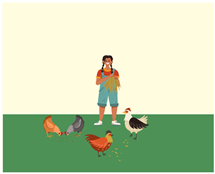 | 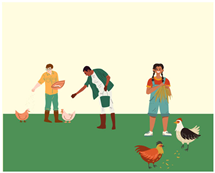 |
| 3 |  |  |
| 4 |  |  |
| 5 |  |  |
| 6 |  |  |
| 7 |  |  |
| 8 |  |  |
| 9 |  |  |
| 10 |  |  |
| 11 |  |  |
| 12 |  |  |
| 13 |  |  |
| 14 | 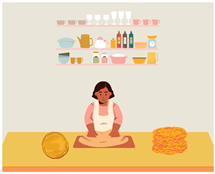 |  |
| 15 |  |  |
| 16 |  |  |
| 17 |  |  |
| 18 |  | 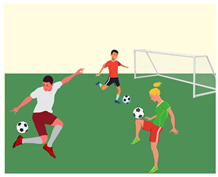 |
| 19 |  |  |
| 20 |  |  |
| 21 |  |  |
| 22 |  |  |
| 23 |  |  |
| 24 |  |  |
| 25 | 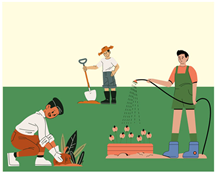 |  |
| 26 |  | 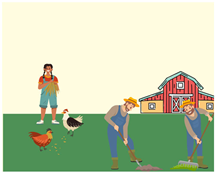 |
| 27 |  |  |
| 28 |  |  |
| 29 |  |  |
| 30 |  |  |
| 31 |  |  |
| 32 |  |  |
| 33 |  |  |
| 34 |  |  |
| 35 |  |  |
| 36 |  |  |
| 37 |  |  |
| 38 | 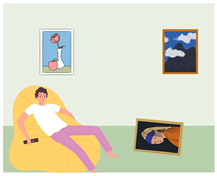 |  |
| 39 |  |  |
| 40 |  |  |
| 41 |  |  |
| 42 |  |  |
| 43 |  |  |
| 44 |  | 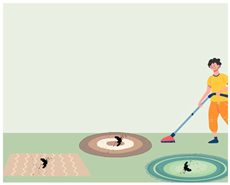 |
| 45 |  |  |
| 46 |  |  |
| 47 | 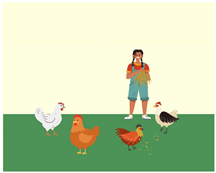 | 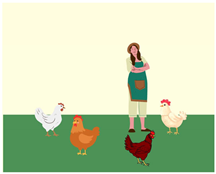 |
| 48 |  |  |
Appendix B
| Item | Sentence | Surface/True | Inverse/False |
|---|---|---|---|
| 1 | A person watered every plant Una persona regó cada planta | M = 4.80 SD = 0.41 M = 1.07; SD = 0.26 | M = 3.27; SD = 1.33 M = 2.47; SD = 1.60 |
| 2 | A person fed every chicken Una persona alimentó a cada gallina | M = 4.75; SD = 0.45 M = 4.80; SD = 0.41 | M = 3.79; SD = 1.12 M = 2.20; SD = 1.32 |
| 3 | A person carried every plant Una persona cargó cada planta | M = 3.40; SD = 1.50 M = 4.13; SD = 1.06 | M = 2.67; SD = 1.29 M = 3.47; SD = 1.64 |
| 4 | A person harvested every vegetable Una persona cosechó cada verdura | M = 4.06; SD = 1.29 M = 4.00; SD = 1.20 | M = 3.43; SD = 1.40 M = 3.00; SD = 1.41 |
| 5 | A woman planted every plant Una mujer plantó cada planta | M = 3.88; SD = 1.22 M = 4.60; SD = 0.51 | M = 3.62; SD = 1.39 M = 3.20; SD = 1.78 |
| 6 | A person took every pumpkin Una persona se llevó cada calabaza | M = 4.60; SD = 0.63 M = 4.93; SD = 0.26 | M = 2.80; SD = 1.52 M = 2.60; SD = 1.45 |
| 7 | A woman read every book Una mujer leyó cada libro | M = 3.33; SD = 1.29 M = 3.73; SD = 1.03 | M = 3.47; SD = 0.83 M = 2.47; SD = 1.36 |
| 8 | A person slept on every pillow Una persona se durmió en cada almohada | M = 4.62; SD = 0.87 M = 4.07; SD = 1.49 | M = 3.59; SD = 1.42 M = 4.00; SD = 1.31 |
| 9 | A woman used every computer Una mujer usó cada computadora | M = 4.20; SD = 1.08 M = 3.87; SD = 1.41 | M = 2.47; SD = 1.46 M = 2.33; SD = 1.72 |
| 10 | A woman wrapped every gift Una mujer envolvió cada regalo | M = 4.80; SD = 0.41 M = 4.80; SD = 0.56 | M = 2.93; SD = 1.71 M = 2.73; SD = 1.71 |
| 11 | A man decorated every cake Un hombre decoró cada pastel | M = 4.53; SD = 0.64 M = 4.80; SD = 0.56 | M = 3.67; SD = 1.59 M = 3.33; SD = 1.76 |
| 12 | A person drank every juice Una persona se tomó cada jugo | M = 4.27; SD = 0.88 M = 4.47; SD = 1.06 | M = 3.00; SD = 1.51 M = 3.20; SD = 1.90 |
| 13 | A woman baked every dessert Una mujer horneó cada postre | M = 4.54; SD = 0.52 M = 4.20; SD = 1.21 | M = 3.11; SD = 1.37 M = 2.87; SD = 1.68 |
| 14 | A woman made every pizza crust Una mujer hizo cada masa de pizza | M = 3.93; SD = 1.38 M = 4.60; SD = 0.83 | M = 3.13; SD = 1.71 M = 3.13; SD =1.85 |
| 15 | A person ate every snack Una persona se comió cada botana | M = 3.69; SD = 1.30 M = 4.47; SD = 0.83 | M = 4.00; SD = 1.11 M = 3.00; SD = 1.85 |
| 16 | A woman cooked every stew Una mujer cocinó cada guisado | M = 3.71; SD = 1.20 M = 4.60; SD = 0.63 | M = 3.00; SD = 1.55 M = 2.60; SD = 1.59 |
| 1 | As briefly explained in the last paragraph of Section 2, additional interpretations could, in principle, arise if auditory or discourse cues are considered. For the purposes of this study, however, we restrict our analysis to the two interpretations that emerge directly from scope ambiguities. Nonetheless, in some cases, though not in the stimuli used in this study, more than two interpretations may arise depending on the complexity of the sentence and the number of quantifiers involved. |
| 2 | In simple terms, Logical Form can be thought of as an internal structure that reflects the semantic relationships within a sentence. |
| 3 | In this study heritage bilinguals are defined as individuals that were exposed to (at least) two languages before the age of 10, either sequentially or simultaneously, and have cultural/familial ties to the heritage language. Furthermore, a heritage language is typically the non-hegemonic language in a given context, and therefore does not receive equal institutional and societal support. |
| 4 | In theory, these sentences are also ambiguous. For the purposes of this study, however, we treat them as unambiguous because the corresponding visual stimuli either correctly represents the sentence or it clearly represents it incorrectly. |
References
- Anderson, C. (2004). The structure and real-time comprehension of quantifier scope ambiguity [Doctoral dissertation, Northwestern University]. [Google Scholar]
- Antonyuk, S. (2019). Quantifier scope in Russian. Glossa: A Journal of General Linguistics, 4(1), 54. [Google Scholar] [CrossRef]
- Aoun, J., & Li, Y. A. (1989). Scope and constituency. Linguistic Inquiry, 20(2), 141–172. [Google Scholar]
- Apresjan, V. (2019). Pragmatics in the interpretation of scope ambiguities. Intercultural Pragmatics, 16(4), 421–461. [Google Scholar] [CrossRef]
- Arredondo, M. M., Hu, X.-S., Satterfield, T., Riobóo, A. T., Gelman, S. A., & Kovelman, I. (2019). Bilingual effects on lexical selection: A neurodevelopmental perspective. Brain and Language, 195, 104640. [Google Scholar] [CrossRef]
- Audacity Team. (2021). Audacity (version 3.1.3) [computer software]. Available online: https://audacityteam.org (accessed on 10 January 2023).
- Baayen, R. H., Davidson, D. J., & Bates, D. M. (2008). Mixed-effects modeling with crossed random effects for subjects and items. Journal of Memory and Language, 59(4), 390–412. [Google Scholar] [CrossRef]
- Barberán Recalde, T. (2017). The interpretation of negated quantifiers in Spanish. In C. Vargas-Sierra (Ed.), Professional and academic discourse: An interdisciplinary perspective (Vol. 2, pp. 181–190). EPiC Series in Language and Linguistics. EasyChair. [Google Scholar] [CrossRef]
- Barberán Recalde, T. (2019). La interpretación de los cuantificadores algunos y batzuk ‘algunos’ por parte de niños monolingües (español/euskera) y bilingües (euskera-español). Lingüística, 35(2), 255–266. [Google Scholar] [CrossRef]
- Barr, D. J., Levy, R., Scheepers, C., & Tily, H. J. (2013). Random effects structure for confirmatory hypothesis testing: Keep it maximal. Journal of Memory and Language, 68(3), 255–278. [Google Scholar] [CrossRef]
- Bates, D., Mächler, M., Bolker, B., & Walker, S. (2015). Fitting linear mixed-effects models using lme4. Journal of Statistical Software, 67(1), 1–48. [Google Scholar] [CrossRef]
- Benmamoun, E., Montrul, S., & Polinsky, M. (2013). Heritage languages and their speakers: Opportunities and challenges for linguistics. Theoretical Linguistics, 39(3–4), 129–181. [Google Scholar] [CrossRef]
- Birdsong, D., Gertken, L. M., & Amengual, M. (2012). Bilingual language profile: An easy-to-use instrument to assess bilingualism. COERLL, University of Texas at Austin. Available online: https://sites.la.utexas.edu/bilingual/ (accessed on 1 March 2021).
- Bobaljik, J. D., & Wurmbrand, S. (2012). Word order and scope: Transparent interfaces and the ¾ signature. Linguistic Inquiry, 43(3), 371–421. [Google Scholar] [CrossRef]
- Bonvin, A., Brugger, L., & Berthele, R. (2023). Lexical measures as a proxy for bilingual language dominance? International Review of Applied Linguistics in Language Teaching, 61(2), 257–285. [Google Scholar] [CrossRef]
- Canva. (2023). Canva [computer software]. Available online: https://www.canva.com (accessed on 1 December 2022).
- Chen, Y., & Hester, M. (2024). Scope assignment in quantifier-negation sentences in early Korean-Chinese bilinguals’ grammars. Proceedings of the Linguistic Society of America, 9(1), 5655. [Google Scholar] [CrossRef]
- Chen, Y., & Huan, T. (2023). Scope assignment in quantifier-negation sentences in Tibetan as a heritage language in China. Second Language Research. online first. [Google Scholar] [CrossRef]
- Cheng, L. S. P., Burgess, D., Vernooij, N., Solís-Barroso, C., McDermott, A., & Namboodiripad, S. (2021). The problematic concept of native speaker in psycholinguistics: Replacing vague and harmful terminology with inclusive and accurate measures. Frontiers in Psychology, 12, 715843. [Google Scholar] [CrossRef]
- Chung, E. S., & Shin, J.-A. (2023). Native and second language processing of quantifier scope ambiguity. Second Language Research, 39(3), 785–810. [Google Scholar] [CrossRef]
- Crain, S., & McKee, C. (1985). The acquisition of structural restrictions on anaphora. In S. Berman, J.-W. Choe, & J. McDonough (Eds.), Proceedings of the 16th north east linguistic society (pp. 94–110). GLSA, University of Massachusetts, Amherts. Available online: https://hdl.handle.net/20.500.14394/36490 (accessed on 18 May 2021).
- Crain, S., & Thornton, R. (1998). Investigations in universal grammar: A guide to research on the acquisition of syntax and semantics. MIT Press. [Google Scholar]
- Dawes, J. (2008). Do data characteristics change according to the number of scale points used? An experiment using 5-point, 7-point and 10-point scales. International Journal of Market Research, 50(1), 61–104. [Google Scholar] [CrossRef]
- Fábregas, A. (2018). Determiners and quantifiers in Spanish: Types, tests, and theories. Borealis—An International Journal of Hispanic Linguistics, 7(2), 1–108. [Google Scholar] [CrossRef]
- Fox, D. (2002). Antecedent-contained deletion and the copy theory of movement. Linguistic Inquiry, 33(1), 63–96. [Google Scholar] [CrossRef]
- Francis, W. S. (1999). Cognitive integration of language and memory in bilinguals: Semantic representation. Psychological Bulletin, 125(2), 193–222. [Google Scholar] [CrossRef]
- Grosjean, F. (2008). Studying bilinguals. Oxford University Press. [Google Scholar]
- Gutiérrez Rexach, J. (1995). The scope of universal quantifiers in Spanish interrogatives. In K. Zagona (Ed.), Grammatical theory and romance languages: Selected papers from the 25th linguistic symposium on romance languages (pp. 87–98). John Benjamins Publishing Company. [Google Scholar]
- Huang, C.-T. J. (1982). Logical relations in Chinese and the theory of grammar [Ph.D. dissertation, MIT]. [Google Scholar]
- Ioup, G. (1975). Some universals for quantifier scope. In J. P. Kimball (Ed.), Syntax and semantics 4 (pp. 75–100). Academic Press. [Google Scholar]
- Izura, C., Cuetos, F., & Brysbaert, M. (2014). Lextale-Esp: A test to rapidly and efficiently assess the Spanish vocabulary size. Psicologica, 35, 49–66. [Google Scholar]
- Jaeggli, O. (1991). Head government in LF-representation. In J. Huang, & R. May (Eds.), Logical structure and linguistic structure (pp. 79–100). Academic Press. [Google Scholar]
- Jegerski, J., & Sekerina, I. A. (2021). The psycholinguistics of heritage languages. In S. Montrul, & M. Polinsky (Eds.), The Cambridge handbook of heritage languages and linguistics (pp. 449–470). Cambridge University Press. [Google Scholar]
- Kadmon, N., & Roberts, C. (1986). Prosody and scope: The role of discourse structure. In A. M. Farley, P. T. Farley, & K.-E. McCullough (Eds.), Parasession on pragmatics and grammatical theory: Chicago Linguistics Society (CLS) 22, Part 2 (pp. 16–28). Chicago Linguistic Society. [Google Scholar]
- Kamiya, M., & Guo, Z. (2024). Scope of negation, gestures, and prosody: The English negative quantifier as a case in point. Journal of Psycholinguistic Research, 53, 56. [Google Scholar] [CrossRef]
- Keenan, E. (2002). Some properties of natural language quantifiers: Generalized quantifier theory. Linguistics and Philosophy, 25(6), 627–654. [Google Scholar] [CrossRef]
- Kurtzman, H., & MacDonald, M. (1993). Resolution of quantifier scope ambiguities. Cognition, 48, 243–279. [Google Scholar] [CrossRef]
- Lemhöfer, K., & Broersma, M. (2012). Introducing LexTALE: A quick and valid lexical test for advanced learners of English. Behavior Research Methods, 44(2), 325–343. [Google Scholar] [CrossRef]
- May, R. (1977). The grammar of quantification [Doctoral dissertation, Massachusetts Institute of Technology]. [Google Scholar]
- May, R. (1985). Logical form: Its structure and derivation. MIT Press. [Google Scholar]
- May, R. (1989). Interpreting logical form. Linguistics and Philosophy, 12(4), 387–435. [Google Scholar] [CrossRef]
- Musolino, J. (1998). Universal grammar and the acquisition of semantic knowledge: An experimental investigation into the acquisition of quantifier negation interaction in English. In ProQuest dissertations & theses global closed collection (304419775). ProQuest. Available online: https://www.proquest.com/dissertations-theses/universal-grammar-acquisition-semantic-knowledge/docview/304419775/se-2 (accessed on 13 April 2021).
- Musolino, J., Crain, S., & Thornton, R. (2000). Navigating negative quantificational space. Linguistics, 38(1), 1–32. [Google Scholar] [CrossRef]
- Musolino, J., & Lidz, J. (2003). The scope of isomorphism: Turning adults into children. Language Acquisition, 11(4), 277–291. [Google Scholar] [CrossRef]
- Musolino, J., & Lidz, J. (2006). Why children aren’t universally successful with quantification. Linguistics, 44, 817–852. [Google Scholar] [CrossRef]
- O’Grady, W. (2008). Innateness, universal grammar, and emergentism. Lingua, 118(4), 620–631. [Google Scholar] [CrossRef]
- O’Grady, W., & Lee, S. (2006). The interpretation of inverse scope in Korean. In W. O’Grady, J.-Y. Yoon, J.-Y. Han, P. Lee, H.-Y. Kim, S.-H. Hong, S. Chung, & F. Torres (Eds.), Inquiries into Korean linguistics II (pp. 369–380). Taehaksa. [Google Scholar]
- Polinsky, M. (2018). Heritage languages and their speakers. Cambridge University Press. [Google Scholar]
- Revilla, M. A., Saris, W. E., & Krosnick, J. A. (2014). Choosing the number of categories in agree–disagree scales. Sociological Methods & Research, 43(1), 73–97. [Google Scholar] [CrossRef]
- Ronai, E. (2018). Quantifier scope in heritage bilinguals: A comparative experimental study. In S. Hucklebridge, & M. Nelson (Eds.), Proceedings of the 48th annual meeting of the north east linguistic society (Volume 3, pp. 29–38). University of Massachusetts. [Google Scholar]
- Rothman, J. (2009). Understanding the nature and outcomes of early bilingualism: Romance languages as heritage languages. International Journal of Bilingualism, 13, 155–163. [Google Scholar] [CrossRef]
- Satterfield, T. (1999). Bilingual selection of syntactic knowledge: Extending the principles and parameters approach (1st ed.). Springer. [Google Scholar] [CrossRef]
- Scontras, G., Polinsky, M., Tsai, C., & Mai, K. (2017). Cross-linguistic scope ambiguity: When two systems meet. Glossa: A Journal of General Linguistics, 2(1), 36. [Google Scholar] [CrossRef]
- Sekerina, I. A., & Sauermann, A. (2015). Visual attention and quantifier-spreading in heritage Russian bilinguals. Second Language Research, 31(1), 75–104. [Google Scholar] [CrossRef]
- Shen, J., & Chen, Y. (2022). Simplified grammar in both languages? On scope assignment in Q-Neg sentences in English-dominant heritage Chinese speakers. Proceedings of the Linguistic Society of America, 7, 5228. [Google Scholar] [CrossRef]
- Shi, H. (2024). Contrastive study of universal quantifiers in Spanish and their counterparts in Chinese. Sinología Hispánica. China Studies Review, 18(1), 169–200. [Google Scholar] [CrossRef]
- Solís-Barroso, C., & Stefanich, S. (2019). Measuring language dominance in early Spanish/English bilinguals. Languages, 4(3), 62. [Google Scholar] [CrossRef]
- Song, Y., Hernandez Jimenez, A., & Scontras, G. (2021). Cross-linguistic scope ambiguity: An investigation of English, Spanish, and Mandarin. Proceedings of the Linguistic Society of America, 6(1), 572–586. [Google Scholar] [CrossRef]
- Syrett, K., Lingwall, A., Perez-Cortes, S., Austin, J., Sánchez, L., Baker, H., Germak, C., & Arias-Amaya, A. (2017). Differences between Spanish monolingual and Spanish-English bilingual children in their calculation of entailment-based scalar implicatures. Glossa: A Journal of General Linguistics, 2(1), 31. [Google Scholar] [CrossRef]
- Syrett, K., Simon, G., & Nisula, K. (2014). Prosodic disambiguation of scopally ambiguous quantificational sentences in a discourse context. Journal of Linguistics, 50(2), 453–493. [Google Scholar] [CrossRef]
- Tunstall, S. (1998). The interpretation of quantifiers: Semantics and processing [Ph.D. dissertation, University of Massachusetts]. [Google Scholar]
- Ward, G., & Hirschberg, J. (1985). Implicating uncertainty: The pragmatics of fall-rise intonation. Language, 61(4), 747–776. [Google Scholar] [CrossRef]


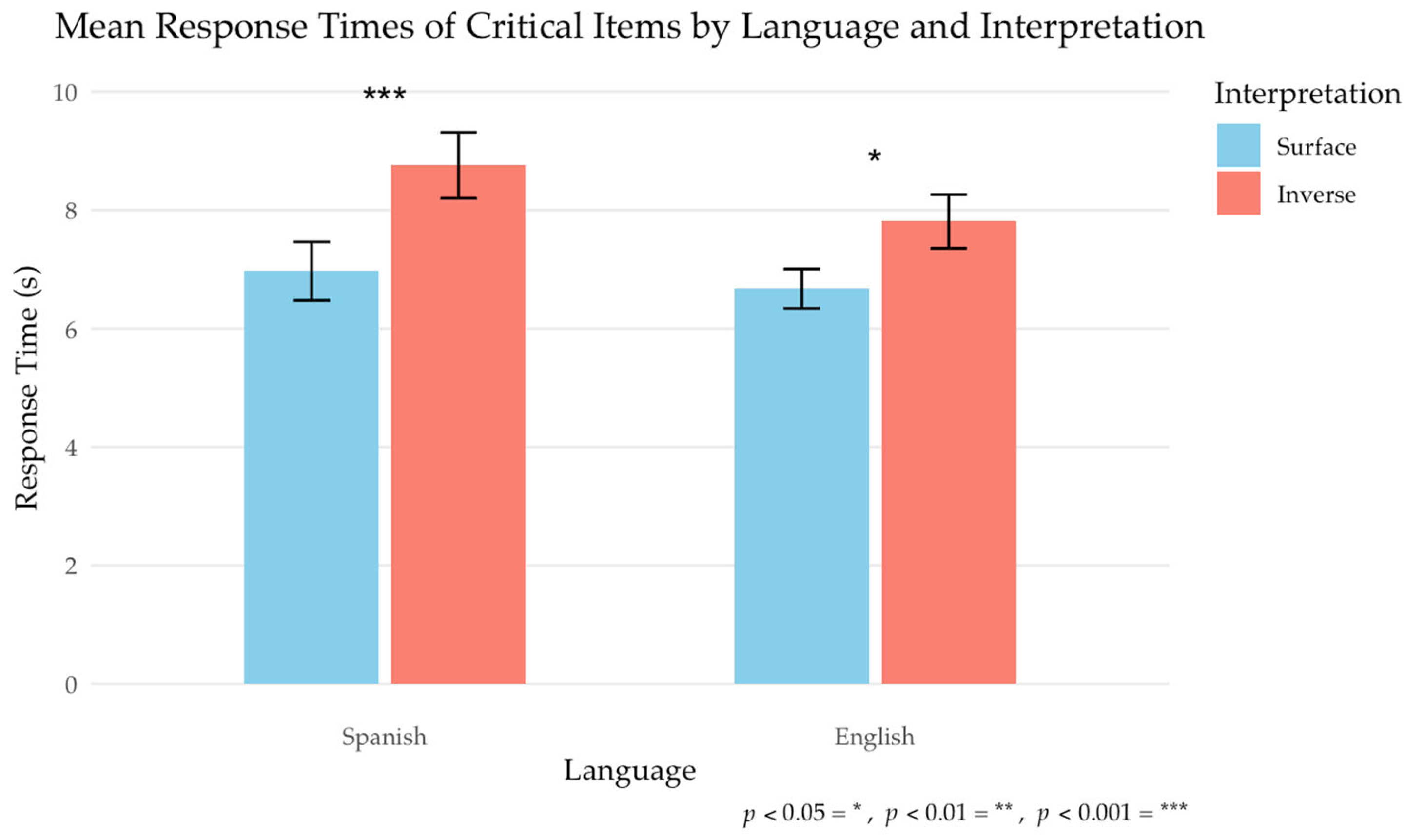
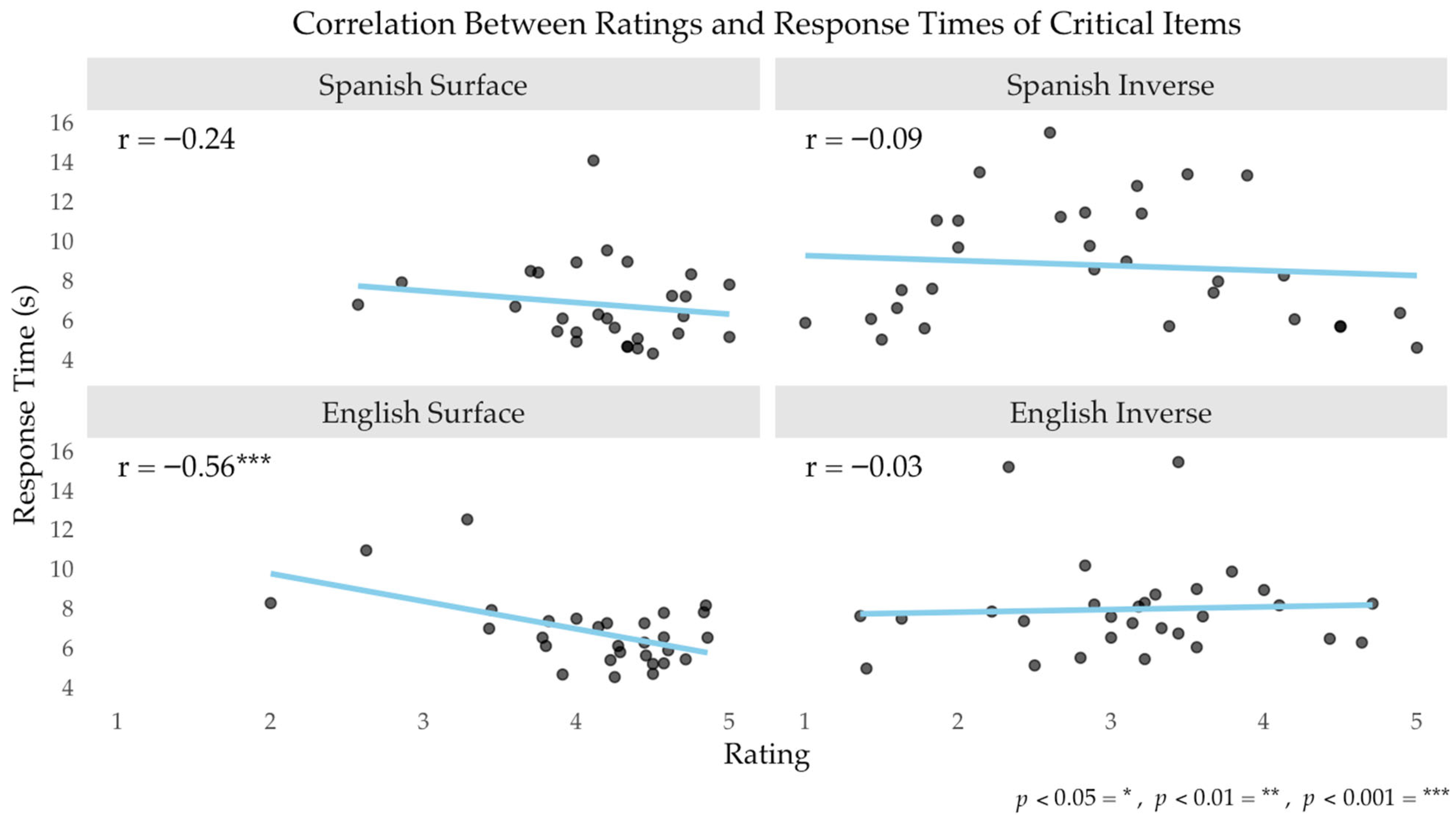

| Type | Sentence | Ambiguous? | Number | Type |
|---|---|---|---|---|
| 1 | A person watered every plant Una persona regó cada planta | Yes | 16 | CI |
| 2 | A person did not do exercise Una persona no hizo ejercicio | No | 8 | Filler |
| 3 | A woman rode a skateboard Una persona montó una patineta | No | 8 | Filler |
| 4 | A man did not peel every orange Una persona no peló cada naranja | Yes | 16 | Filler |
| Type | Sentence | Spanish Surface | Spanish Inverse | English Surface | English Inverse |
|---|---|---|---|---|---|
| 2 | A person did not do exercise Una persona no hizo ejercicio | 4.44, SD = 0.99 | 1.23, SD = 0.67 | 4.10, SD = 1.19 | 1.42, SD = 0.84 |
| 3 | A woman rode a skateboard Una persona montó una patineta | 4.74, SD = 0.56 | 1.27, SD = 0.46 | 4.46, SD = 0.89 | 1.27, SD = 0.59 |
| 4 | A man did not peel every orange Una persona no peló cada naranja | 4.23, SD = 0.79 | 4.04, SD = 0.81 | 4.36, SD = 0.56 | 3.97, SD = 0.89 |
| Measure | Spanish Surface | Spanish Inverse | English Surface | English Inverse |
|---|---|---|---|---|
| Rating | 4.19, SD = 0.56 | 2.92, SD = 1.12 | 4.14, SD = 0.66 | 3.18, SD = 0.87 |
| Response Time (s) | 6.97, SD = 2.70 | 8.75, SD = 3.04 | 6.67, SD = 1.80 | 7.81, SD = 2.48 |
| Comparison | t(df) | p | d [95% CI] | Interpretation |
|---|---|---|---|---|
| Within-language (paired) | ||||
| Spanish: Surface vs. Inverse | 5.75 (29) | <0.001 *** | 1.43 [0.72, 2.14] | Lg. effect |
| English: Surface vs. Inverse | 4.79 (29) | <0.001 *** | 1.24 [0.55, 1.92] | Lg. effect |
| Across languages (independent) | ||||
| Surface: Spanish vs. English | 0.31 (58) | 0.754 | 0.08 [−0.44, 0.60] | Neg. effect |
| Inverse: Spanish vs. English | −1.03 (58) | 0.308 | −0.27 [−0.78, 0.25] | Sm. effect |
| Comparison | t(df) | p | d [95% CI] | Interpretation |
|---|---|---|---|---|
| Within-language (paired) | ||||
| Spanish: Surface vs. Inverse | −3.57 (29) | 0.001 *** | −0.62 [−1.00, −0.24] | Med. effect |
| English: Surface vs. Inverse | −2.65 (29) | 0.013 * | 0.51 [−0.93, −0.10] | Med. effect |
| Across languages (independent) | ||||
| Surface: Spanish vs. English | 0.50 (58) | 0.622 | 0.13 [−0.39, 0.65] | Neg. effect |
| Inverse: Spanish vs. English | 1.32 (58) | 0.191 | 0.34 [−0.18, 0.86] | Sm. effect |
| Interpretation Type | r | p | 95% CI |
|---|---|---|---|
| Spanish Surface | −0.24 | 0.201 | [−0.55, 0.13] |
| Spanish Inverse | −0.09 | 0.624 | [−0.44, 0.28] |
| English Surface | −0.56 | 0.001 *** | [−0.76, −0.24] |
| English Inverse | −0.03 | 0.856 | [−0.39, 0.33] |
| Interpretation Type | r | p | 95% CI |
|---|---|---|---|
| Spanish Surface | −0.23 | 0.224 | [−0.54, 0.14] |
| Spanish Inverse | −0.15 | 0.434 | [−0.48, 0.22] |
| English Surface | −0.50 | 0.005 ** | [−0.73, −0.17] |
| English Inverse | −0.48 | 0.007 ** | [−0.72, −0.15] |
Disclaimer/Publisher’s Note: The statements, opinions and data contained in all publications are solely those of the individual author(s) and contributor(s) and not of MDPI and/or the editor(s). MDPI and/or the editor(s) disclaim responsibility for any injury to people or property resulting from any ideas, methods, instructions or products referred to in the content. |
© 2025 by the authors. Licensee MDPI, Basel, Switzerland. This article is an open access article distributed under the terms and conditions of the Creative Commons Attribution (CC BY) license (https://creativecommons.org/licenses/by/4.0/).
Share and Cite
Solís-Barroso, C.; Pires, A.; Satterfield, T. Navigating Ambiguity: Scope Interpretations in Spanish/English Heritage Bilinguals. Languages 2025, 10, 244. https://doi.org/10.3390/languages10090244
Solís-Barroso C, Pires A, Satterfield T. Navigating Ambiguity: Scope Interpretations in Spanish/English Heritage Bilinguals. Languages. 2025; 10(9):244. https://doi.org/10.3390/languages10090244
Chicago/Turabian StyleSolís-Barroso, Cecilia, Acrisio Pires, and Teresa Satterfield. 2025. "Navigating Ambiguity: Scope Interpretations in Spanish/English Heritage Bilinguals" Languages 10, no. 9: 244. https://doi.org/10.3390/languages10090244
APA StyleSolís-Barroso, C., Pires, A., & Satterfield, T. (2025). Navigating Ambiguity: Scope Interpretations in Spanish/English Heritage Bilinguals. Languages, 10(9), 244. https://doi.org/10.3390/languages10090244







